FPV Media Drone R&D Project: Phase One
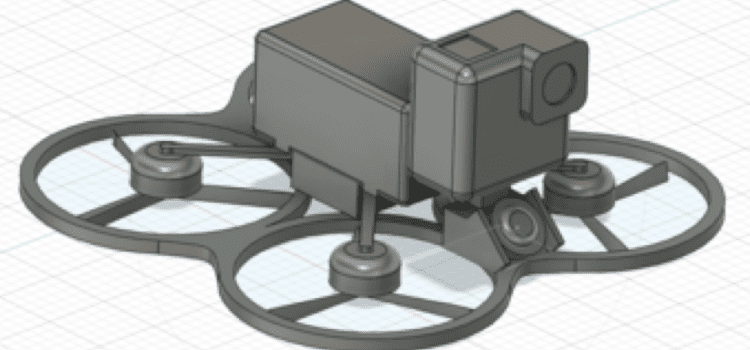
At Survey Air, we are constantly looking to push ourselves with how we capture and deliver drone data. Our latest venture takes us into the world of FPV (First Person View) quadcopters, agile UAV’s capable of capturing footage that more traditional multirotor simply can’t replicate.
We’ve set ourselves the challenge of designing and building two FPV drones from scratch: one durable and robust for training and one purpose-built for capturing stunning 4K visuals. These custom-built drones will give us the ability to fly dynamic, close-proximity missions of environments and structures from more engaging and striking perspectives.
Two of our team members, both qualified aerospace engineers, have been eager to take on a project like this, and now feels like the perfect time. It marks an exciting new chapter for Survey Air and our journey into custom drone solutions.
Design Concept
The goal of this project is to develop two FPV drones that share core architecture but serve distinct purposes. One as a resilient training platform, and the other as a polished media aircraft capable of capturing high-quality visual content.
Both drones will be built from the ground up, giving us full control over the configuration, and performance.
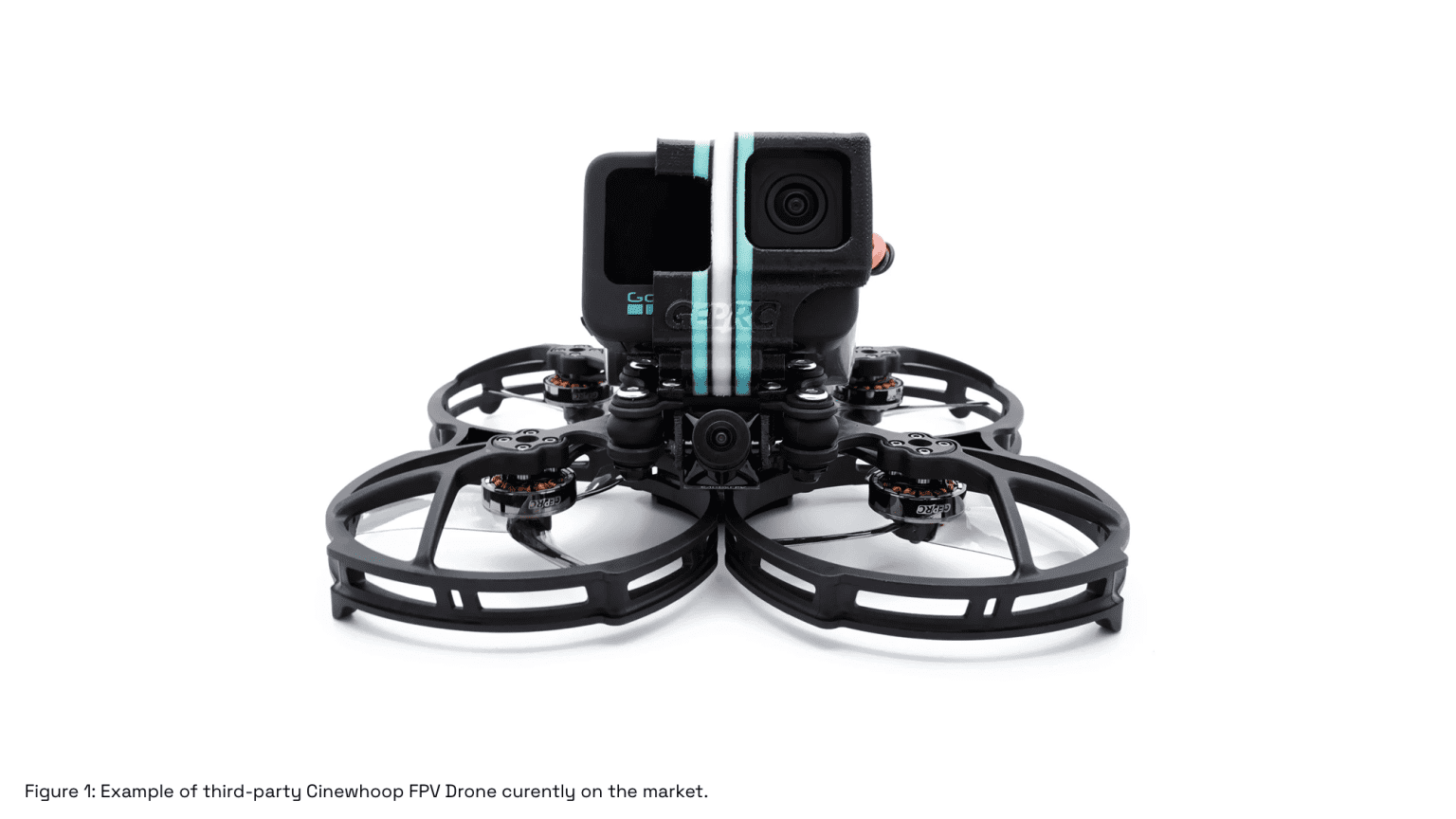
The Training Drone
The training drone will be designed to be rugged, repairable, and cost-effective. It will be built primarily from second-hand or recycled components sourced from our existing inventory and contributions from the team. The Quad will be fully functional and capture ready, but the primary aim is practicality. This drone will serve as our workhorse for skill development in test flights.
Key design requirements:
- Durable frame capable of withstanding repeated crashes
- Modular layout to simplify maintenance and part replacement
- Power system and flight controller matched to the Media Drone for consistency
- Compatibility with digital FPV systems, particularly DJI Goggles 2
The Media Drone
In contrast, the media drone will be a clean, professionally built aircraft intended for capturing cinematic footage. All components will be new and carefully selected for reliability, flight performance, and visual output. Smooth, stable flight is a priority, as is a professional appearance suitable for on-site filming.
This platform will be tuned for dynamic but controlled movement, ideal for tracking shots, fly-throughs, and high-energy reveals.
Key design requirements:
- High-quality action camera (minimum spec: 4K at 60fps).
- Neat wiring and built-in vibration damping for smooth, shake-free video.
- Well-balanced airframe with predictable handling.
Mounting and frame design that supports easy camera changes or component upgrades.
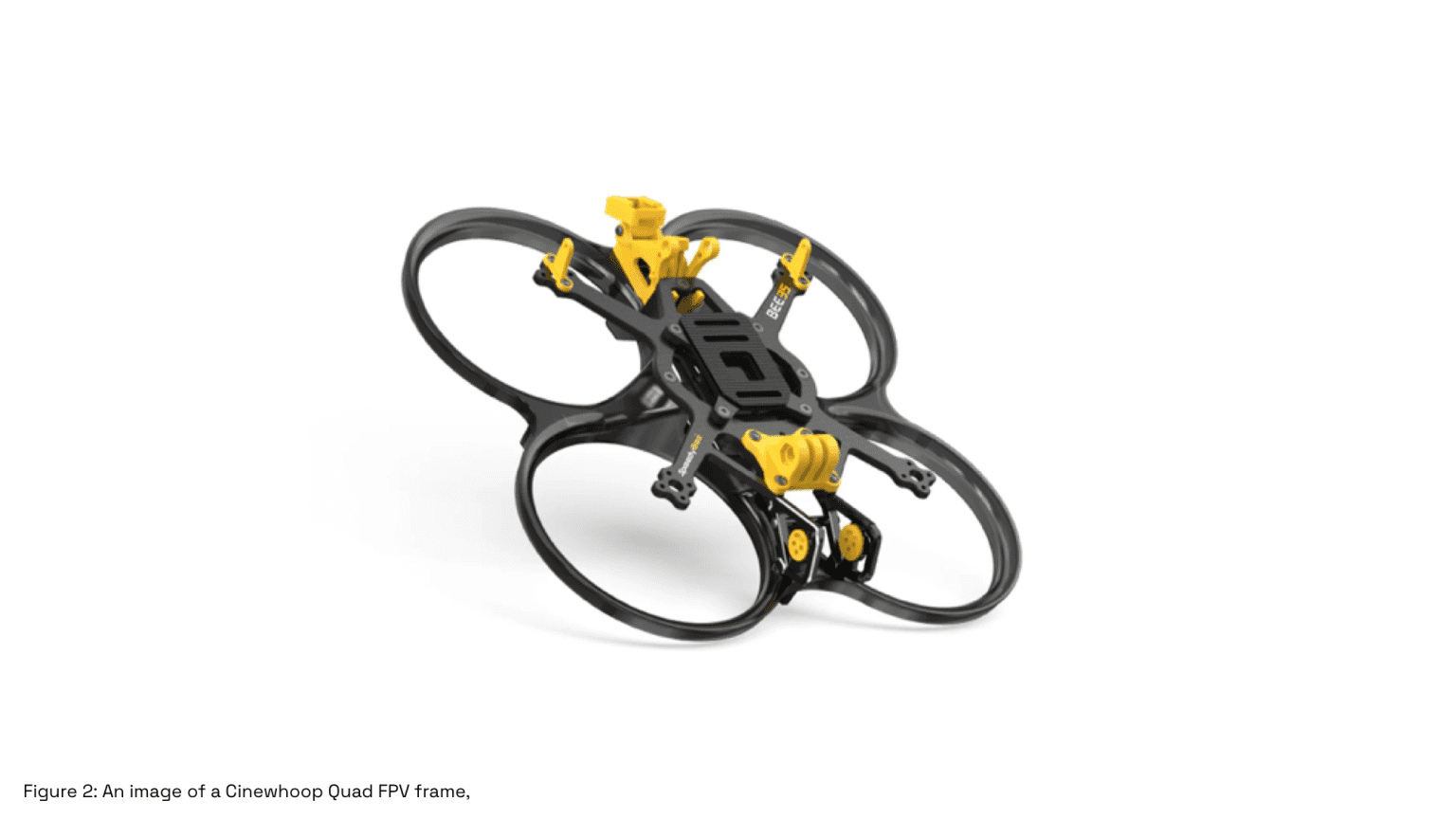
Component Architecture
While FPV drones are often associated with DIY hobby builds, developing a pair of reliable, high-performance platforms (especially for professional use) demands far more than simply bolting parts together. With two qualified aerospace engineers on our team, we’re treating this project as an engineering exercise in its own right: one that brings together performance targets, system integration, and careful weight-budgeting to ensure each aircraft delivers on its intended role.
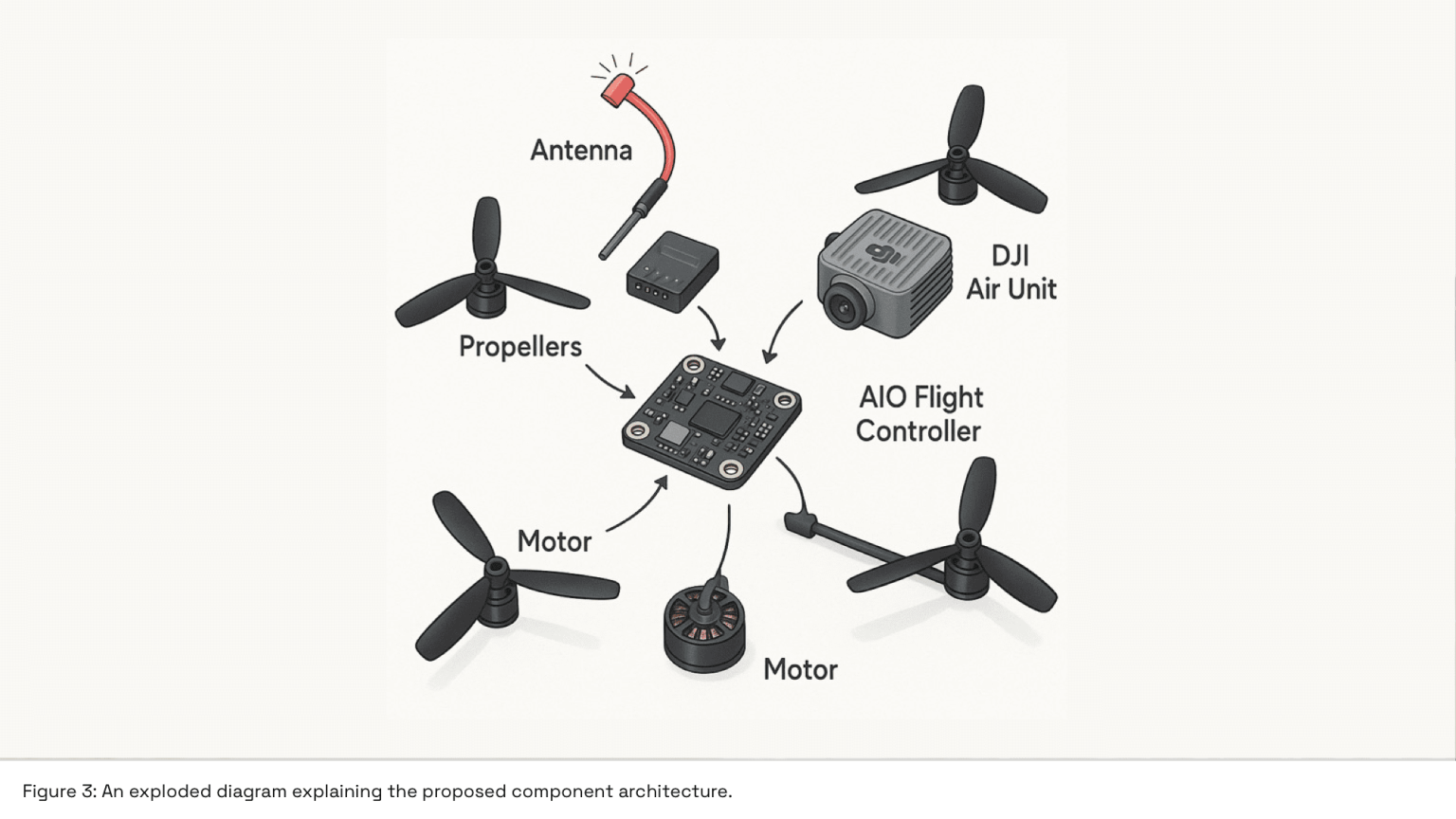
We began by defining a shared architecture for both aircraft. This allows us to streamline pilot training, simplify maintenance, and reduce the overall number of spares and accessories required.
The first step of defining this architecture was finding a Video transmission System (VTX), capable of connecting to our existing hardware, specifically the DJI Goggles 2. This was our only non-negotiable requirement and everything else in the design was built around this choice.
The next critical decision was selecting a reliable radio control link. We evaluated both ExpressLRS (ELRS) and TBS Crossfire; the two most prominent long-range, low-latency protocols used in RC builds. While Crossfire has a proven track record and robust ecosystem, ELRS offered significant advantages for the control of an FPV quad in tight environments; both in terms of telemetry bandwidth and hardware flexibility. ELRS Is a better fit for our design goals, especially with its support for lightweight, high-performance receivers.
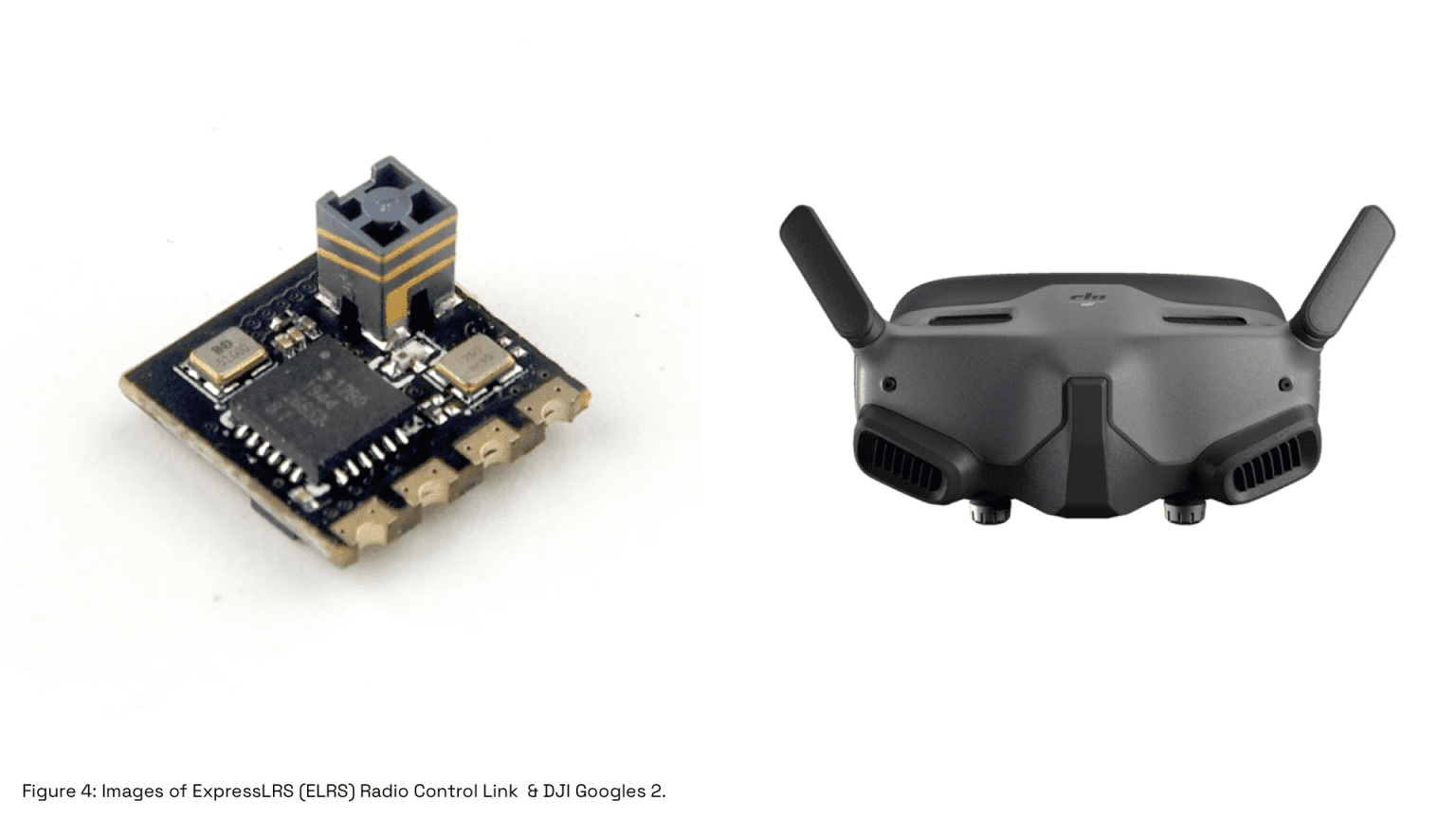
When it came to selecting the flight controller software for our builds, Betaflight was the natural starting point. Its reputation for low-latency control, responsive handling, and deep configurability makes it the default for piloted FPV.
We still however took the time to investigate alternatives like iNav and ArduPilot to ensure we weren’t overlooking a better fit for our needs. iNav offered improved GPS and navigation features over Betaflight, while ArduPilot brought a wealth of autonomous capabilities and advanced mission planning tools. For an FPV build, both software came with significant trade-offs, especially in terms of latency and setup complexity. After this Investigation, Betaflight remained the most appropriate choice for our builds.
Component Selection
With the core architecture finalised, we had a clear framework to guide the hardware selection process for out FPV Builds. Out training aircraft will use the architecture discussed above made from parts already in our inventory (with the exception of the VTX). This allowed us to put all of our attention into finding the parts for our Media Quad that would maximise video quality, improve flight stability, and integrate seamlessly with the chosen VTX system.
DJI 03 Air
After careful consideration we have selected the DJI 03 Air unit as our VTX module. Despite the limitations of a DJI architecture here, the video quality and seamless integration with our existing hardware simply can’t be beaten by the other VTX units we investigated.
This module became the building block for the rest of our design. We wanted to ensure the aircraft we developed fits together neatly and securely; this Is not only to improve the aesthetic of the Quad but ensures there Is no unnecessary vibrations that may affect the quality of our video feed.
SpeedyBee Bee35 Cinewhoop Frame
The Speedy Bee Bee35 seemed like the obvious choice of airframe for our use case. The frame stood out to us as it is purpose-built to accommodate the DJI 03 Air Unit. The frame comes with an aluminium heat sink designed for the 03, this will aid in thermal management during extended flights and the tight, secure mounting we were looking for.
This is a classic Cinewhoop frame, with a clean, layout for mounting boards and routing cables. It features the prop guards synonymous with Cinewhoop frames that give us the much-needed added safety for flying close to people.
It should be incredibly easy to mount and add new components, either purchased from the manufacturer or by designing and 3d-printing our own designs. One additional module we plan to include is a Dampened Gimbal mount, which should further remove any unwanted vibration from our footage.
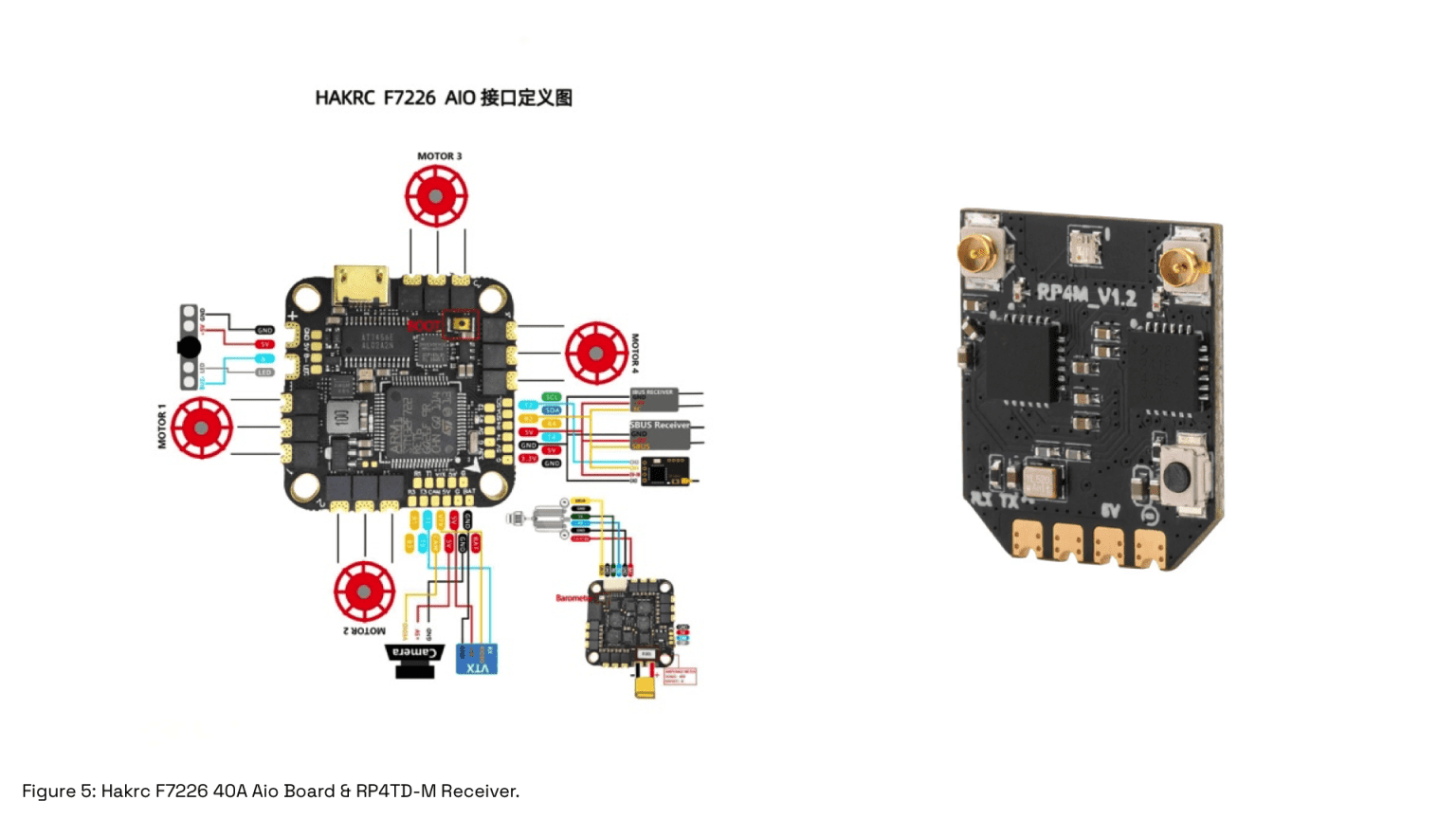
Hakrc F7226 40A Aio
Possibly the most Important design choice when it comes to FPV is the Flight controller. After deciding to proceed with the DJI VTX and finding the perfect frame to compliment this, we needed to find a compact flight controller with built-in ESCs to act as the brain of our aircraft.
HakRC F7226 40A satisfies all of our requirements as well as having the added bonus of being an All-In-One board. This frees up more room in our airframe that would usually be taken up by a flight stack.
The HakRC board runs Betaflight firmware, which we’ll use to configure and fine-tune, the performance of our aircraft to match our flying style.
RadioMaster RP4TD-M ExpressLRS 2.4GHz Mini True Diversity Receiver
To complete the core of our control system, we selected the RP4TD-M ExpressLRS 2.4GHz Mini True Diversity Receiver. ELRS has become a leading protocol for FPV due to its low latency and long-range capabilities and seems like the obvious choice for this build given our use case.
The RP4TD-M has a miniature footprint and twin antenna configuration. This gives us the best of both worlds: high performance in a tiny, easy-to-mount package.
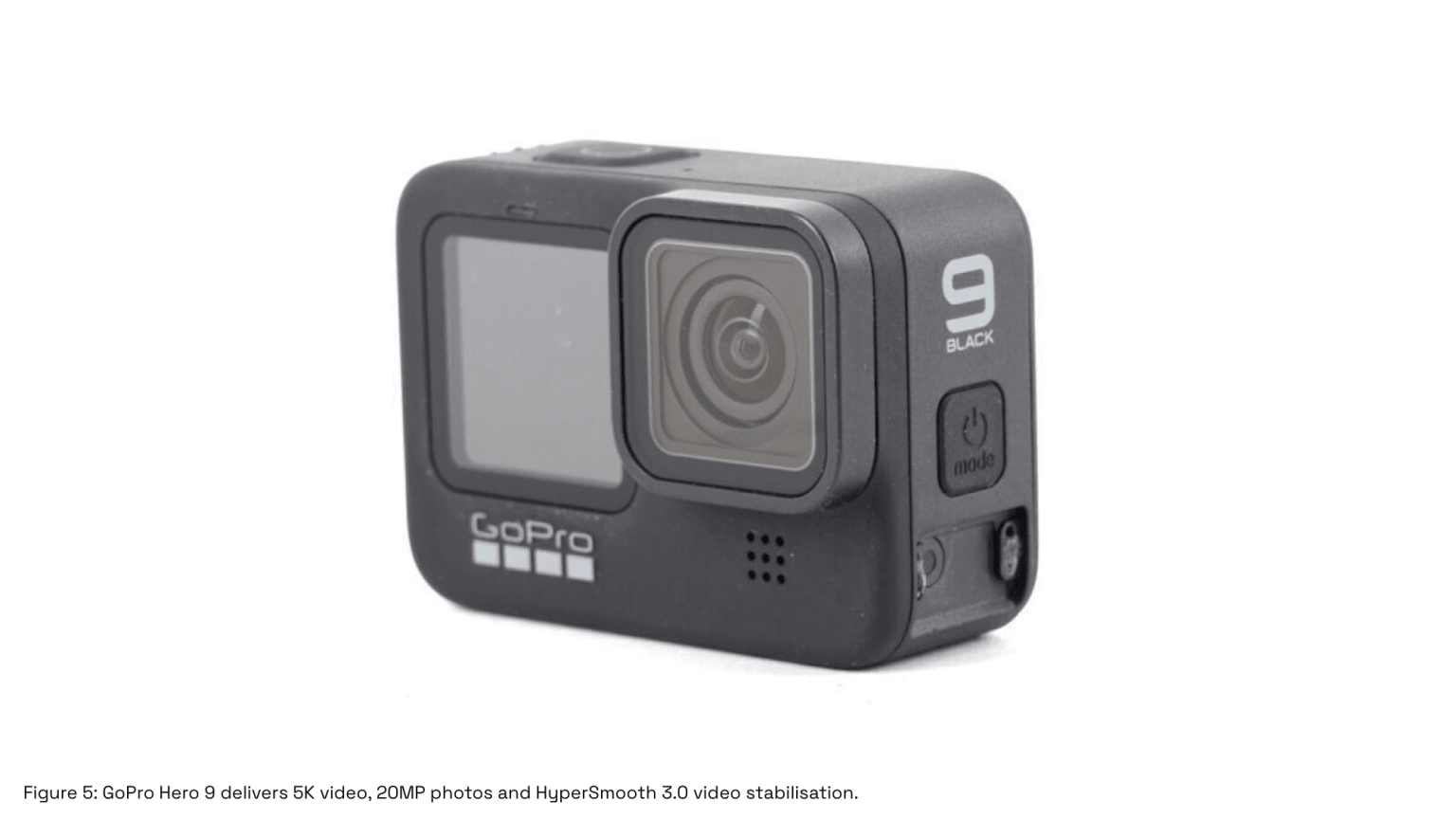
4k Action Cam
For capturing high-quality flight footage, we chose the GoPro Hero 9 as our dedicated FPV action camera. While there are lighter, FPV-specific cameras on the market, the Hero 9 strikes the right balance between image quality and durability. Its ability to shoot in 5K resolution with HyperSmooth stabilisation in tandem with our GoPro damping mount means we can rely on crisp, cinematic footage straight out of the camera.
While this is by no means the full list of parts that we will be using in our build, it does represent the core components that will define how it will be controlled and ensures we are able to. We have also assembled our batteries, motors and propellers and are now ready to construct our Aircraft.
Supplementary Parts (CAD & CAM)
Supplementary CAD and CAM-designed parts, particularly those 3D printed in TPU, offer significant benefits in both performance and durability. TPU’s flexibility and impact resistance make it ideal for producing components like camera mounts, antenna supports, and vibration dampers. These additions help protect sensitive electronics, reduce vibration artifacts in footage, and contribute to overall flight stability.
The real strength of this approach lies in customisation. With even basic CAD tools and access to a 3D printer, it’s possible to design parts specifically designed to a frame, payload, or flight profile. Whether it’s for improved cable management, aerodynamic shaping, or precise component integration, these custom TPU elements allow for a more refined and application-focused build, improving both function and maintainability.
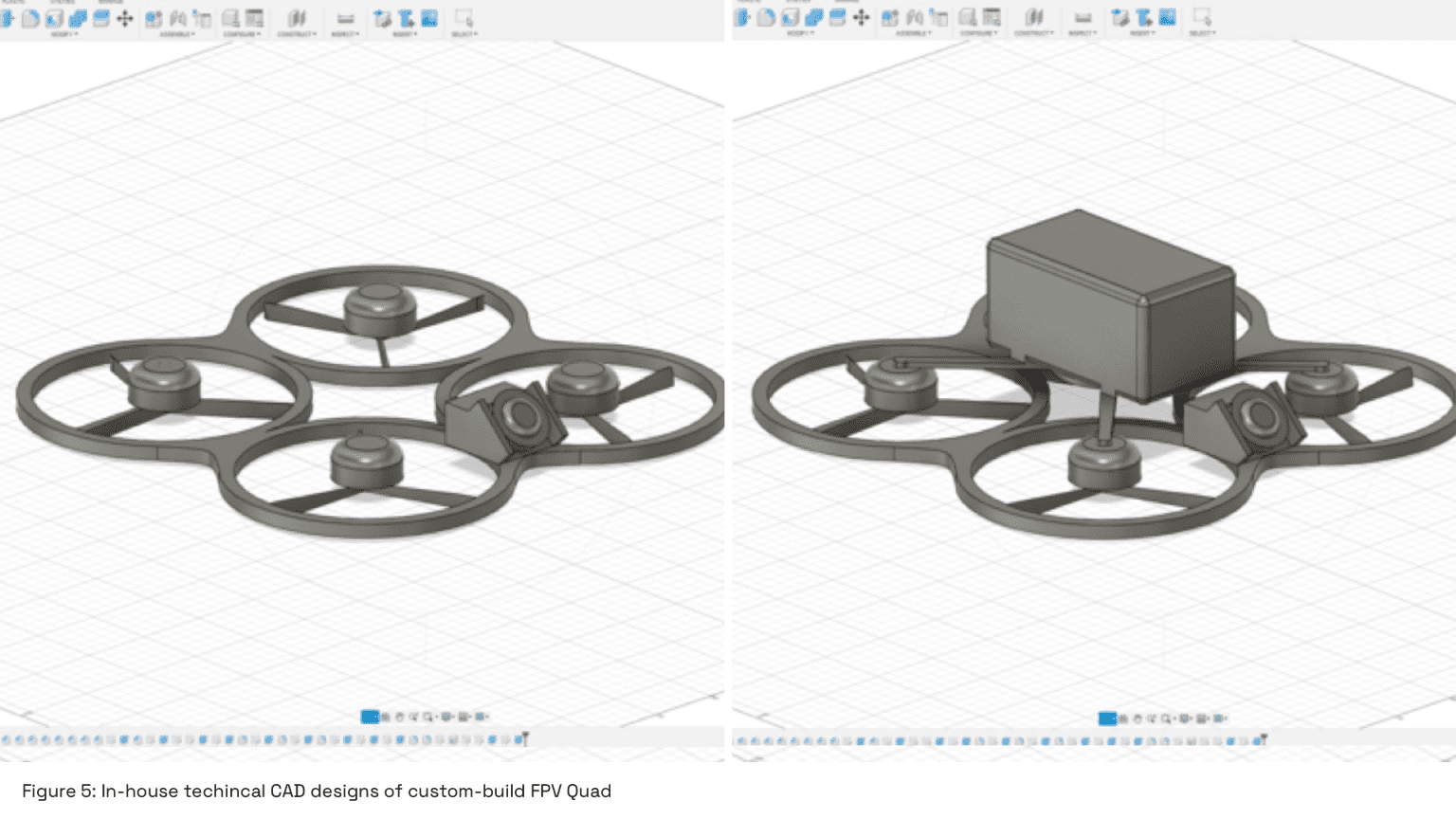
Conclusion
We have reached a significant milestone in our FPV Media Drone R&D project. With our core components locked in, we can now begin the physical assembly of our Quads.
We’ll be mounting, soldering, and securing each part in its intended place, ensuring component accessibility for future upgrades. We will have to carefully plan our cable management, isolate vibrations, and balance our weight distribution to ensure were always capturing the best possible footage.
Once assembly is complete, we’ll move into the tuning and configuration stage. Using Betaflight, we’ll calibrate the flight controller, set up receiver protocols, and begin the iterative process of refining the quad’s flight characteristics. It’s a process that will take time and patience but it’s also where our builds will truly become unique.
This marks the beginning of a multi-phase project, and we look forward to sharing further updates as development progresses.
Contact Us
At Survey Air, we offer specialist drone media services tailored for industry applications, including RAW drone filming & photography, specialist first-person view (FPV), ground-based media and video production services.
If you are interested in using our UAV media services for your next survey or project, please contact our expert team today to request a free quote and consultation.